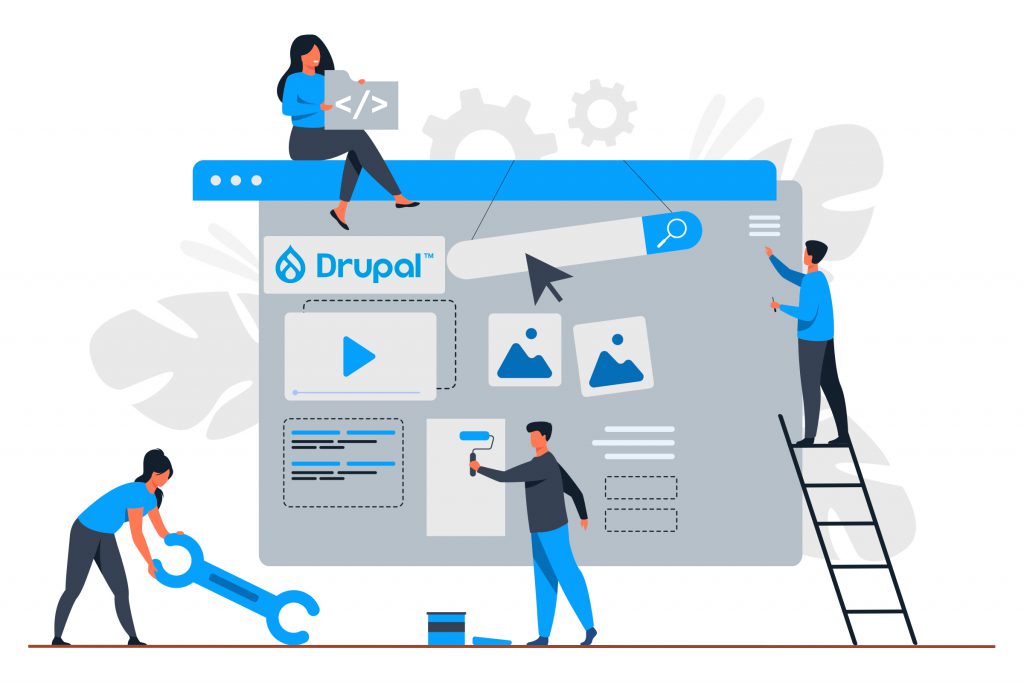Building a website is a necessity in the 21st century. Businesses can no longer rely on a great location for a brick-and-mortar business when the vast majority of commerce takes place digitally. Even if you’re a blogger, having only a Facebook and Instagram page isn’t enough anymore. Whether you’re thinking about visitors to your travel blog or shoppers looking to buy your products, having your own website is essential to making sure that you interact with your customers on your terms and aren’t hemmed in by the limitations of social media sites and seller platforms like Etsy.
Today, we’ll examine how to build a website using the open-source software known as Drupal. We’ll talk about what Drupal is, how to build your own website with this fantastic tool, and the first steps for when you’re ready to hire Drupal developers.
What Is Drupal?
Drupal is an open-source CMS (Content Management System). This is a fancy way of saying Drupal is software that manages your website and the content that’s housed there.
One of the biggest advantages of using Drupal is that it’s open source, meaning it’s 100% free. A fantastic feature of open-source software is that it is used by millions of people, and because of this, millions of people are able to suggest ways to improve Drupal. In a way, you get the benefits of every user that’s come before you as they’ve developed additional features and attributes. Another open-source CMS is WordPress, but there are numerous reasons why Drupal is better than WordPress.
The open-source nature of Drupal also means that individual developers can tweak the software to fit their own personal needs without breaking any licensing or end-user agreements typically set forth by most corporate software used today. This endless customization means that Drupal is quickly becoming the CMS of choice for web developers around the world.
Steps to Building a Site With Drupal
Find a Web Hosting Service
First, you need to find a web hosting service that’s capable of meeting your needs when it comes to the amount of content on your website and the number of visitors you expect to have at any given time.
Fill in the Basics
Make sure you’re set as the primary administrator, then set your security passwords and establish access for other users and developers who may need it. Set your default time zones and country.
Choose a Site Layout and Theme
Layout and theme is potentially the most important thing you will choose when it comes to designing your website. Most websites today have menus in the upper left or right-hand corners of the screen—make sure your customer can easily see and access the menus.
Be sure it’s easy for anyone to navigate your site–one of the most common mistakes a new website can make is having poor organization. If your e-commerce page is listing the specifications of your product, there should be an easy-to-find button that stands out and allows the customer to quickly add the item to their shopping cart. Nothing is more frustrating to a user than confusing buttons that lead to useless pages.
Consider the color scheme, as well. Psychologists will tell you that color is everything when it comes to the mood of places in both the physical and virtual world. For example, if your website is focused on children’s products or blog posts about children’s issues, you may want a color scheme that reflects the joyful nature of childhood and evokes positive emotions for your users.
Upload Your Content
The second to last step is getting the content ready for your website, this will include:
- Copying and pasting your existing blog posts into the necessary fields
- Uploading your product photos
- Inserting your product descriptions
- Finalizing the language of your payment and checkout pages
- Uploading photos of your team and other company photos to create an attractive “About Us” section.
Publish Your Website
Once everything is ready, it’s time to publish your website. Before you begin advertising your new website, it’s a good idea to have a look around and make sure everything works properly and all of the content is laid out as you’ve designed it. It’s also a good idea to have family and friends test the website themselves to see if they find any errors or aspects of navigation that are confusing.
If designing a website yourself using Drupal sounds daunting, don’t worry–freelancer hiring sites such as Guru have listings for thousands of expert-for-hire Drupal developers who are standing by to help you design the website of your dreams.



